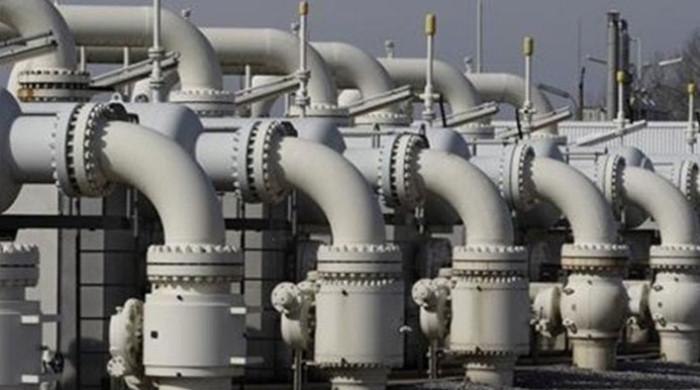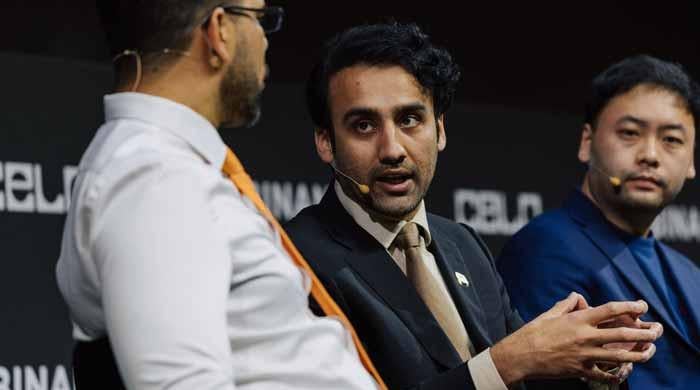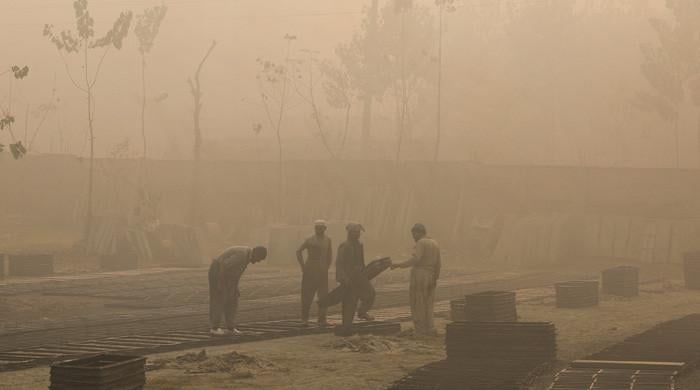Trump hits dozens of countries with steep tariffs, including 19% for Pakistani goods
US president releases executive order listing higher import duty rates of 10% to 41% starting in seven days
August 01, 2025

- New tariffs range from 10% to 41% depending on country.
- Revised rates to come into effect in seven days.
- Canada, India, Brazil, Switzerland face steep tariffs.
WASHINGTON: US President Donald Trump has announced a fresh wave of steep import duties, targeting dozens of countries — including Pakistan with 19% reciprocal tariff, ahead of a Friday trade deal deadline.
The move is part of his wider effort to shake up global trade rules. Pakistan now joins a list of 69 nations whose goods will face new US tariffs, ranging from 10% to 41%, starting next week.
Trump said that the new tariffs are meant to fix what he sees as unfair trade imbalances and protect US economic and security interests.
Trump released an executive order listing higher import duty rates of 10% to 41% starting in seven days for 69 trading partners as the 12:01 am EDT (0401 GMT) deadline approached. Some of them had reached tariff-reducing deals, and some had no opportunity to negotiate with his administration.
The order said that goods from all other countries not listed in an annex would be subject to a 10% US tariff rate.
Trump's order stated that some trading partners, “despite having engaged in negotiations, have offered terms that, in my judgement, do not sufficiently address imbalances in our trading relationship or have failed to align sufficiently with the United States on economic and national-security matters.”
Trump issued a separate order for Canada that raises the rate on Canadian goods subject to fentanyl-related tariffs to 35% from 25% previously, saying Canada had “failed to cooperate” in curbing fentanyl flows into the US.
The higher tariffs on Canadian goods contrasted sharply with Trump’s decision to grant Mexico a 90-day reprieve from higher tariffs of 30% on many goods to provide more time to negotiate a broader trade pact.
A US official told reporters that more trade deals were yet to be announced as Trump’s higher “reciprocal” tariff rates were set to take effect.
“We have some deals,” the official said. “And I don’t want to get ahead of the President of the United States in announcing those deals.”
Regarding the steep tariffs on goods from Canada, the second largest US trading partner after Mexico, the official said that Canadian officials “haven’t shown the same level of constructiveness that we’ve seen from the Mexican side.”
The extension for Mexico avoids a 30% tariff on most Mexican non-automotive and non-metal goods compliant with the US-Mexico-Canada Agreement on trade and came after a Thursday morning call between Trump and Mexican President Claudia Sheinbaum.
“We avoided the tariff increase announced for tomorrow,” Sheinbaum wrote in an X social media post, adding that the Trump call was “very good.”
Approximately 85% of US imports from Mexico comply with the rules of origin outlined in the USMCA, shielding them from 25% tariffs related to fentanyl, according to Mexico’s economy ministry.
Trump said the US would continue to levy a 50% tariff on Mexican steel, aluminium and copper, and a 25% tariff on Mexican autos and on non-USMCA-compliant goods subject to tariffs related to the US fentanyl crisis.
“Additionally, Mexico has agreed to immediately terminate its Non Tariff Trade Barriers, of which there were many,” Trump said in a Truth Social post without providing details.
Korea deal, India discord
South Korea agreed on Wednesday to accept a 15% tariff on its exports to the US, including autos, down from a threatened 25%, as part of a deal that includes a pledge to invest $350 billion in US projects to be chosen by Trump.
But goods from India appeared to be headed for a 25% tariff after talks bogged down over access to India’s agriculture sector, drawing a higher-rate threat from Trump that also included an unspecified penalty for India’s purchases of Russian oil.
Although negotiations with India were continuing, New Delhi vowed to protect the country’s labour-intensive farm sector, triggering outrage from the opposition party and a slump in the rupee.
Trump’s rollout of higher import taxes on Friday comes amid more evidence they have begun driving up consumer goods prices.
Commerce Department data released Thursday showed prices for home furnishings and durable household equipment jumped 1.3% in June, the biggest gain since March 2022, after increasing 0.6% in May. Recreational goods and vehicles prices rose 0.9%, the most since February 2024, after being unchanged in May. Prices for clothing and footwear rose 0.4%.
Tough questions from judges
Trump hit Brazil on Wednesday with a steep 50% tariff as he escalated his fight with Latin America’s largest economy over its prosecution of his friend and former President Jair Bolsonaro, but softened the blow by excluding sectors such as aircraft, energy and orange juice from heavier levies.
The run-up to Trump’s tariff deadline was unfolding as federal appeals court judges sharply questioned Trump’s use of a sweeping emergency powers law to justify his steep tariffs of up to 50% on nearly all trading partners.
Trump invoked the 1977 International Emergency Economic Powers Act to declare an emergency over the growing US trade deficit and impose his “reciprocal” tariffs and a separate fentanyl emergency.
The Court of International Trade ruled in May that the actions exceeded his executive authority, and questions from judges during oral arguments before the US Appeals Court for the Federal Circuit in Washington indicated further scepticism.
US Treasury Secretary Scott Bessent said earlier that the United States believes it has the makings of a trade deal with China, but it is “not 100% done,” and still needs Trump’s approval.
US negotiators “pushed back quite a bit” over two days of trade talks with the Chinese in Stockholm this week, Bessent said in an interview with CNBC.
China is facing an August 12 deadline to reach a durable tariff agreement with Trump’s administration, after Beijing and Washington reached preliminary deals in May and June to end escalating tit-for-tat tariffs and a cut-off of rare earth minerals.













